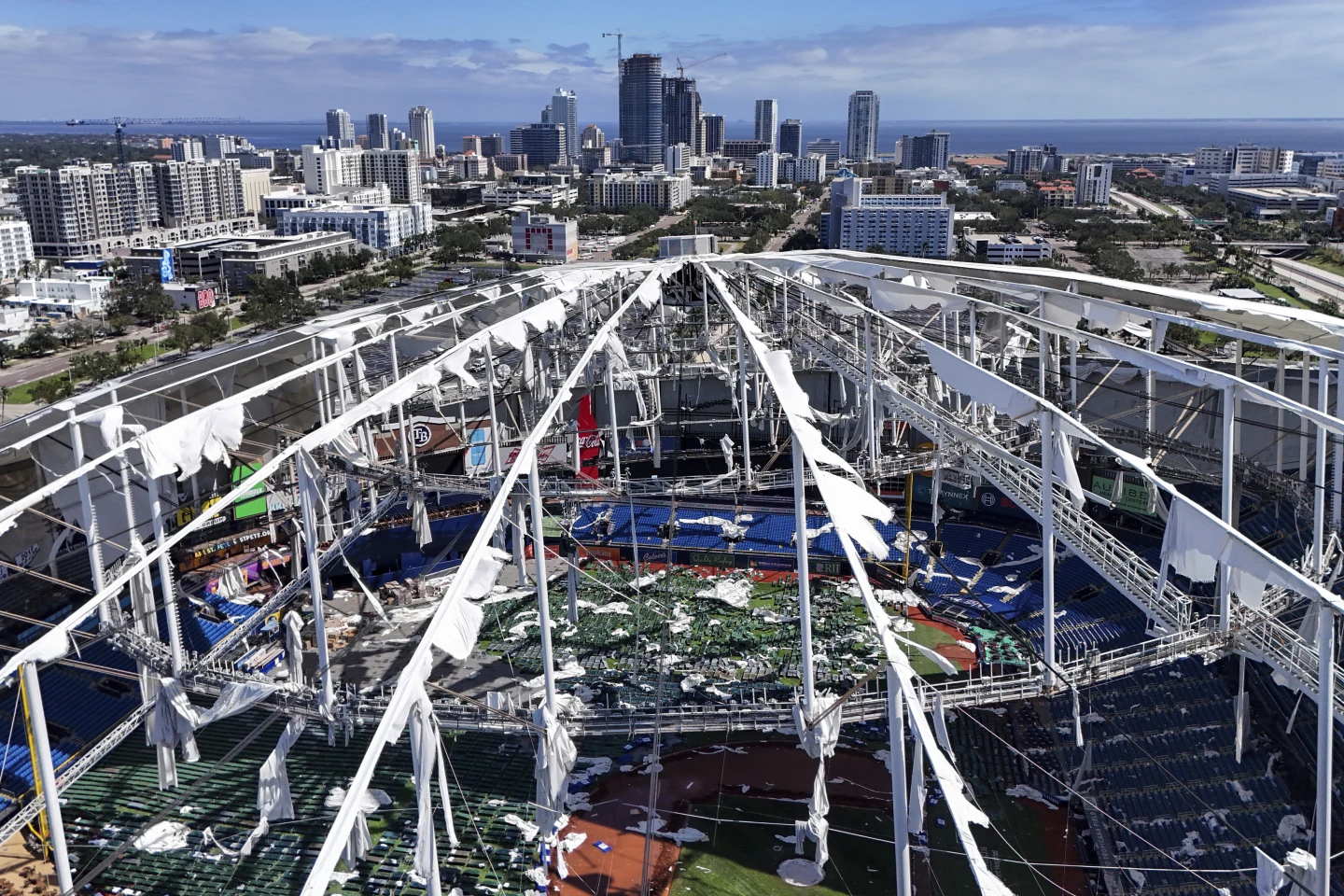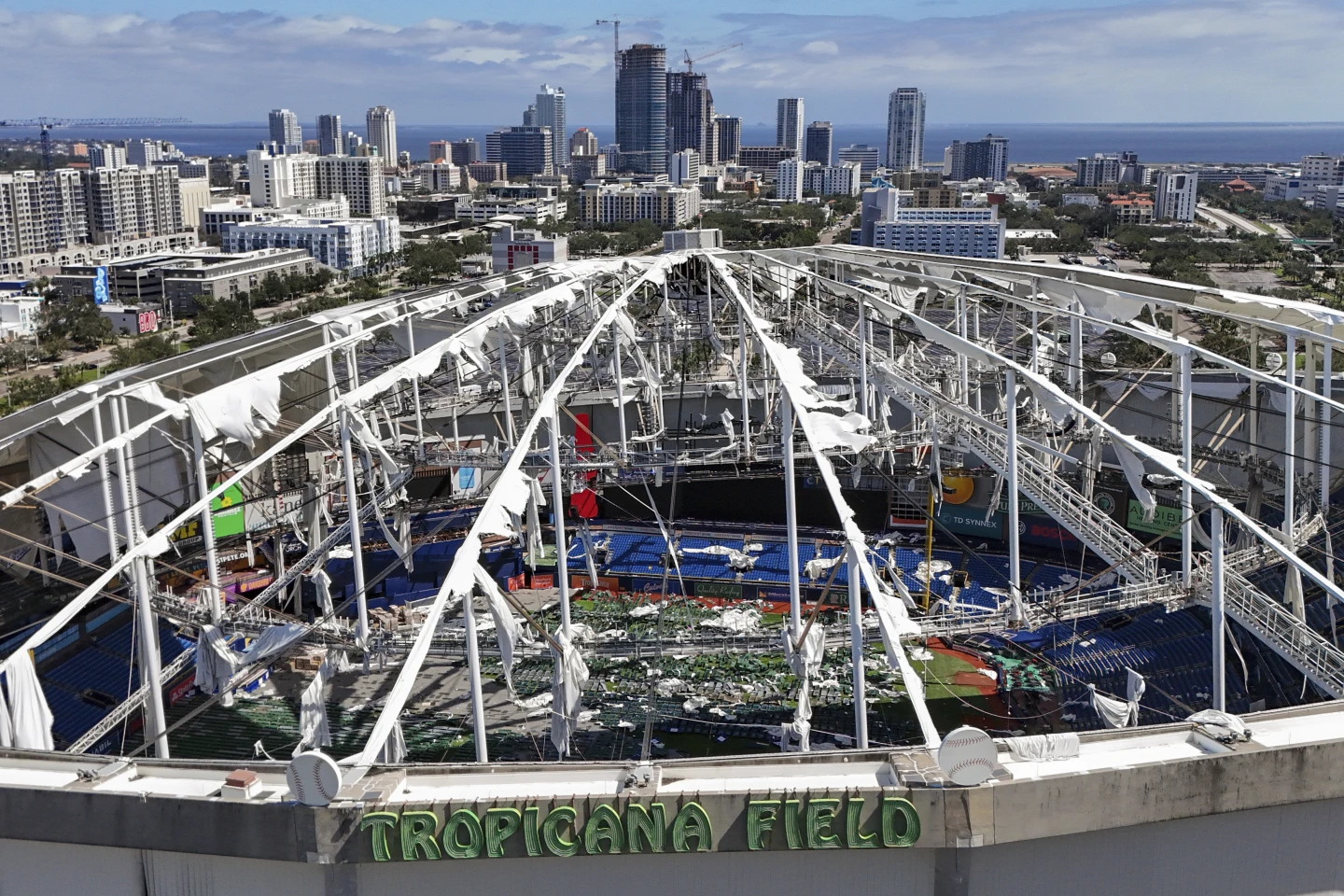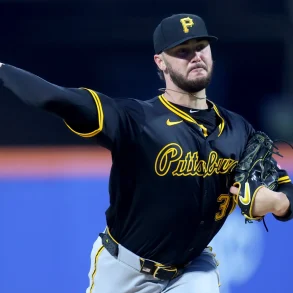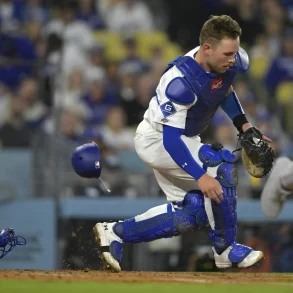A detailed assessment of the hurricane damage to Tropicana Field has concluded that the Tampa Bay Rays’ home stadium is structurally sound and can be repaired for about $55.7 million in time for the 2026 season.
The 412-page report, released on Tuesday by the City of St. Petersburg, which owns the stadium, found that the main structure of the domed stadium “does not appear to have been adversely affected” by Hurricane Milton’s winds, which caused significant damage to the fabric roof.
“The primary structure is serviceable and capable of supporting a replacement tension membrane fabric roof,” stated the report from Hennessy Construction Services.
The report also found that 18 of the ballpark’s 24 fabric panels were damaged when Hurricane Milton made landfall on October 9. Additionally, the storm caused rainwater damage and other interior issues. Tropicana Field, which opened in 1990, has been home to the Rays since the team’s founding in 1998.

Tropicana Field is set to be demolished when a new $1.3 billion stadium is completed for the 2028 season. However, the city and Pinellas County are facing unexpected costs from two hurricanes, including debris removal and damage to parks and infrastructure.
This has raised concerns that some of the main funding sources for the new ballpark might reconsider their plans or even decide not to repair the Trop at all.
The St. Petersburg City Council is scheduled to discuss the report at its meeting on November 21.
“We have so much need across the city,” said council member Brandi Gabbard during a meeting last week. “I love the Rays. I love Tropicana Field. It’s not about not wanting to do this. It’s about a balance of priorities.”
Recently, the council approved $6.5 million to clean up the ballpark and protect it from further damage. This includes waterproofing areas like the press box, seating sections, and scoreboard.
The city does have insurance for the damage, but it comes with a $22 million deductible and is likely to cover only part of the total repair costs. This means that taxpayer money might be needed to cover the rest.
St. Petersburg Mayor Ken Welch said that the city expects insurance and Federal Emergency Management Agency (FEMA) funds to cover most of the repair costs.
“We believe having our hometown team play in St. Petersburg as soon as possible is important for our community,” Welch said in a statement.
Matt Silverman, co-president of the Rays, also issued a statement saying that the team “will continue to have discussions with the city about how to move forward.”
Since the ballpark won’t be ready until the 2026 season, the Rays will need to find another venue to play in for next year.
Major League Baseball prefers that the Rays stay close to their fanbase, and several nearby spring training stadiums have been suggested as possible temporary homes.

These include ballparks in Clearwater (Phillies), Tampa (Yankees), Dunedin (Blue Jays), Sarasota (Orioles), Lakeland (Tigers), and the Rays’ own spring training facility in Port Charlotte. Most of these venues host minor league teams in the summer.
The new Rays stadium is part of a $6.5 billion redevelopment project that will include affordable housing, a Black history museum, retail and office spaces, and restaurants. This project, known as the Historic Gas Plant District, is located on land that was once a thriving Black community before being displaced by the construction of the stadium and an interstate highway.
One option is to delay the new stadium project by a year to allow repairs to Tropicana Field to take place.
“The City plans to meet its obligations to ensure that the Rays can play in St. Pete, and the redevelopment of the Historic Gas Plant District and the construction of a new stadium move forward,” Mayor Welch said.







